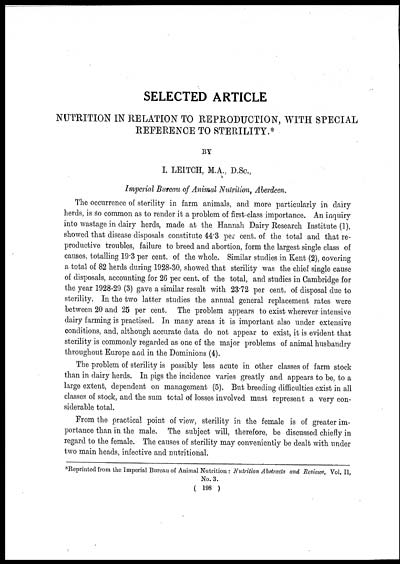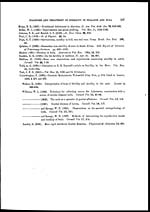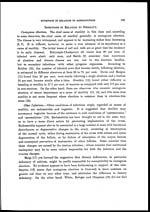Medicine - Veterinary > Veterinary colleges and laboratories > Indian journal of veterinary science and animal husbandry > Volume 3, 1933 > Original articles > Nutrition in relation to reproduction, with special reference to sterility
(256) Page 198
Download files
Individual page:
Thumbnail gallery: Grid view | List view

SELECTED ARTICLE
NUTRITION IN RELATION TO REPRODUCTION, WITH SPECIAL
REFERENCE TO STERILITY.*
BY
I. LEITCH, M.A., D.Sc.,
Imperial Bureau of Animal Nutrition, Aberdeen.
The occurrence of sterility in farm animals, and more particularly in dairy
herds, is so common as to render it a problem of first-class importance. An inquiry
into wastage in dairy herds, made at the Hannah Dairy Research Institute (1),
showed that disease disposals constitute 44.3 per cent. of the total and that re-
productive troubles, failure to breed and abortion, form the largest single class of
causes, totalling 19.3 per cent. of the whole. Similar studies in Kent (2).. covering
a total of 82 herds during 1928-30, showed that sterility was the chief single cause
of disposals, accounting for 26 per cent. of the total, and studies in Cambridge for
the year 1928-29 (3) gave a similar result with 23.72 per cent. of disposal due to
sterility. In the two latter studies the annual general replacement rates were
between 20 and 25 per cent. The problem appears to exist wherever intensive
dairy farming is practised. In many areas it is important also under extensive
conditions, and, although accurate data do not appear to exist, it is evident that
sterility is commonly regarded as one of the major problems of animal husbandry
throughout Europe and in the Dominions (4).
The problem of sterility is possibly less acute in other classes of farm stock
than in dairy herds. In pigs the incidence varies greatly and appears to be, to a
large extent, dependent on management (5). But breeding difficulties exist in all
classes of stock, and the sum total of losses involved must represent a very con-
siderable total.
From the practical point of view, sterility in the female is of greater im-
portance than in the male. The subject will, therefore, be discussed chiefly in
regard to the female. The causes of sterility may conveniently be dealt with under
two main heads, infective and nutritional.
*Reprinted from the Imporial Bureau of Animal Nutrition : Nutrition Abstracts and Reviews, Vol. II,
No. 3.
(198)
Set display mode to: Large image | Zoom image | Transcription
Images and transcriptions on this page, including medium image downloads, may be used under the Creative Commons Attribution 4.0 International Licence unless otherwise stated. ![]()
| Permanent URL | https://digital.nls.uk/75230212 |
|---|
| Description | Covers articles from 1933. |
|---|




